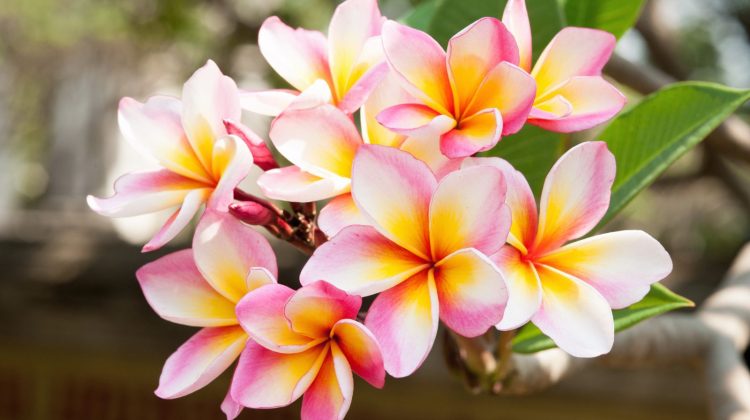
Cultivating frangipani, also known as plumeria, brings a burst of tropical elegance to your home garden.
These stunning flowers, with their vibrant hues and sweet fragrance, can transform any space into a serene retreat.
Caring for these plants is a rewarding experience as they flourish under your attention, creating a lush display that captivates the senses.
To successfully grow plumeria at home, it’s essential to understand their specific needs.
Originating from tropical regions, these plants thrive in warm conditions with plenty of sunlight.
Whether you have a sprawling backyard or a modest balcony space, with the right care, you can nurture these beautiful blooms to their full potential.
Adopting the appropriate watering, soil composition, and seasonal adjustments will ensure your frangipani flowers not only survive but thrive.
By providing well-draining soil and the right amount of moisture, you can look forward to their delightful blossoms year after year.
Embrace the joy of gardening with these exotic beauties and let their enchanting fragrance fill your living space.
In this article, we'll cover
1. Getting Started with Frangipanis
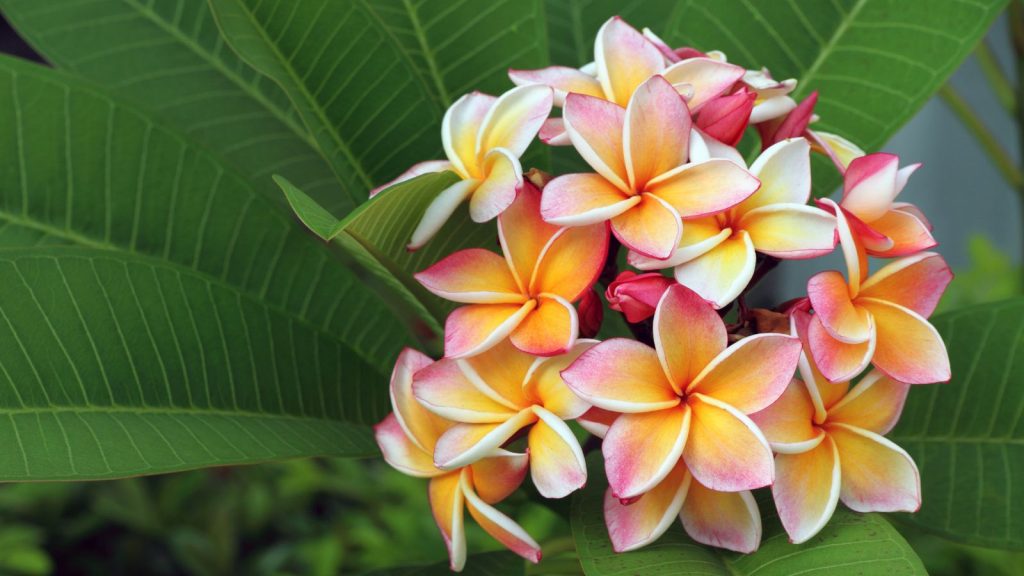
Embarking on the journey of growing Frangipanis, you’ll revel in the vibrant diversity of colors and scents.
Let’s ensure you select the best variety for your space and understand the essential conditions for thriving flowers.
Selecting the Right Variety
Frangipanis, or plumeria, are native to tropical regions and flaunt a splendid array of cultivars.
When choosing, consider Plumeria rubra with its classic reds and pinks, Plumeria obtusa known for white blooms with a yellow center, or the evergreen Plumeria pudica which boasts unique foliage.
These beloved flowers come in various colors from deep reds to pastel hues, making it exciting to choose the perfect one for your garden.
When planning to grow in containers or pots, look for dwarf or compact cultivars that will be content in a more confined space.
Essential Growing Conditions
Your Frangipanis will crave lots of sunlight; at least six hours of full sun is ideal for them to flourish.
They can tolerate some shade, but too much may hinder bloom production.
As for humidity, these tropical beauties thrive with moderate to high levels, reminiscent of their native climates.
Keep the temperature in mind – Frangipanis love warmth and should be protected from freezing temperatures.
Soil is another critical factor. Drainage is key.
Opt for a well-draining mix composed of bark, loam, and sand. This will help prevent root rot while accommodating the plant’s need for dry conditions between watering.
Speaking of watering, establish a routine that allows the soil to dry out somewhat between sessions, supporting the desired growing conditions of your Frangipanis.
2. Planting and Potting Procedures
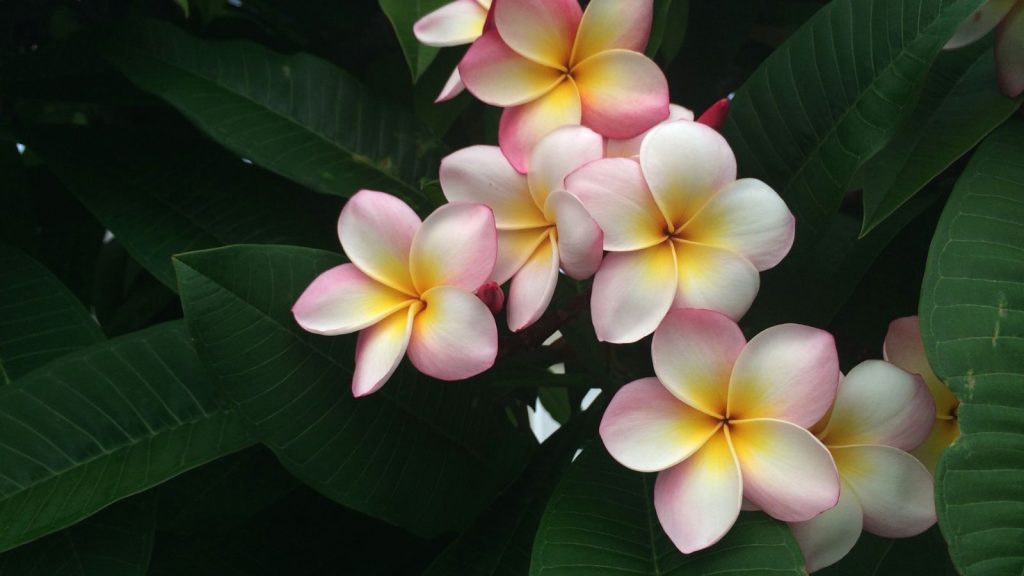
To grow frangipani successfully at home, it’s essential to provide your plant with the right foundation, starting with the soil mix and proper potting techniques.
This will ensure your frangipani flourishes, whether it’s a young tree, a small shrub, or delicate seedlings.
Preparing the Soil Mix
You’ll need a well-draining soil mix that supports the needs of your frangipani.
It should consist of a combination of regular potting mix and materials like perlite, which provides aeration and enhances drainage.
Components of Soil Mix:
- 60% potting soil
- 30% perlite or coarse sand
- 10% compost or aged manure
Mix these ingredients evenly to create an environment that will prevent root rot and foster strong root development for your frangipani.
Potting and Repotting Basics
Selecting the right pot is a critical part of planting your frangipani. Ensure the pot has adequate drainage holes to avoid water accumulation.
When potting:
- Fill the bottom of the pot with a layer of gravel to enhance drainage.
- Add your soil mix up to one third of the pot.
- Place the tree or seedling in the center and fill around it with more soil mix.
Repotting should be done every two to three years or when you notice signs of the plant becoming root-bound.
Each time you repot, choose a pot that is 2-4 inches larger in diameter than the previous one to give your frangipani enough room to grow.
During repotting:
- Carefully remove the plant from its current pot.
- Inspect the roots, trimming away any that are dead or overly long.
- Replace the old soil with fresh soil mix as described above.
Choose a sunny location for your frangipani, as they require bright light to thrive. If you’re in a region with cold winters, potting your frangipani allows you to easily move it indoors during the colder months.
3. Ongoing Maintenance and Care
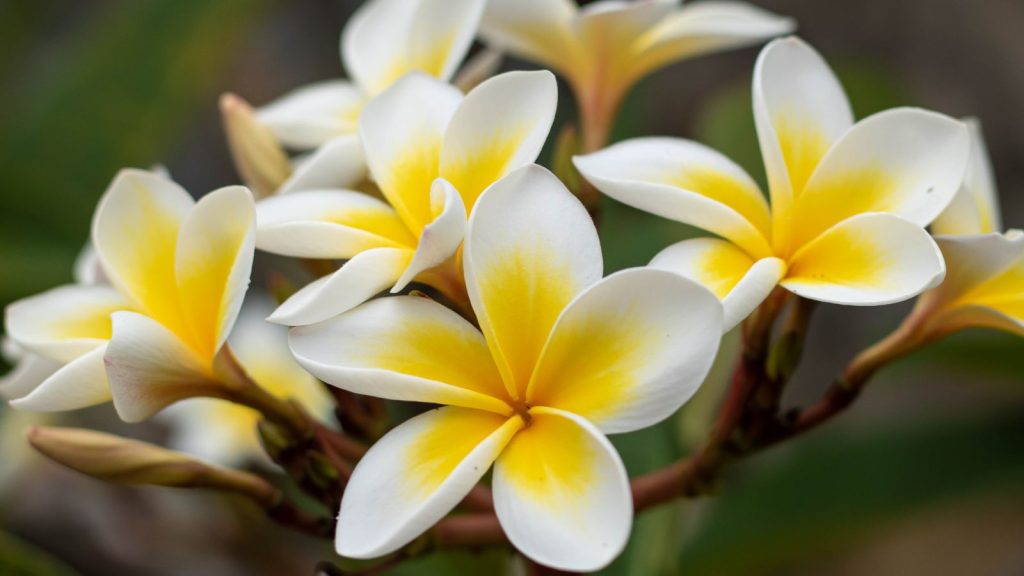
To ensure your frangipani flowers are vibrant and healthy, precise watering, feeding, and pruning practices are key. Let’s guide you through the essentials.
Timely Watering and Fertilization
Watering: Your plumeria loves a good drink, but only when its soil is dry to the touch.
Water deeply when you do to encourage strong root development.
During the growing season, keep an eye on the moisture level and aim to water about once a week, depending on climate and weather conditions.
Fertilization: Frangipani thrives with nutrients, especially phosphorus, which encourages abundant blooms.
Feed your flowers with a high-phosphorus fertilizer every two to three weeks during the blooming season to support their flowering needs.
- Water Schedule: Allow soil to dry between waterings.
- Fertilizer: Use a high-phosphorus fertilizer to promote blooming.
Pruning and Managing Growth
Pruning: Not only does it keep your frangipani looking neat, but pruning also promotes healthier flowers and prevents overgrowth.
Remove any dead or damaged branches, and feel free to shape your plant to your liking.
The best time to prune is late winter or early spring, right before new growth begins.
Managing Growth: Regularly inspect for pests like spider mites and treat any diseases early.
To encourage new growth and more flowers, make strategic cutting just above the leaf nodes after the blooming cycle.
Pruning Terms: Aim to prune late winter or early spring. Remove dead or damaged branches.
4. Dealing with Pests and Problems
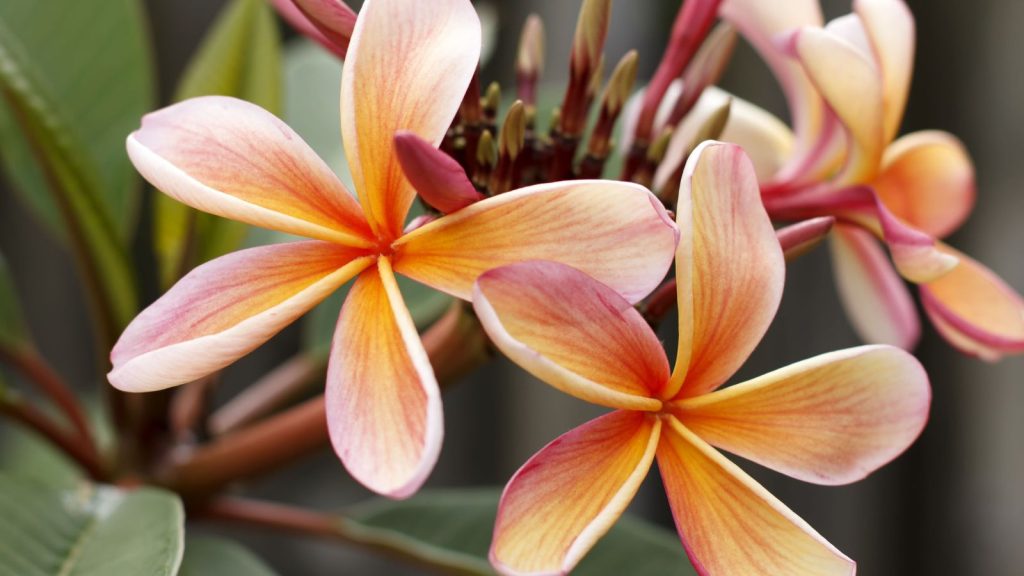
Frangipani plants can thrive in your garden with vibrant blooms and fragrant scents, but like any plant, they can encounter pests and diseases.
Addressing these challenges promptly is key to maintaining the health and beauty of your frangipani.
Identifying and Treating Diseases
Root Rot: This common problem is often a result of overwatering.
If you notice that your frangipani’s leaves are turning yellow, it could be an indicator of this disease.
To combat root rot, ensure the soil is well-draining and allow it to dry out completely before watering again.
Frangipani Rust: Characterized by orange to yellow pustules on the underside of the leaves, frangipani rust can cause leaf drop.
Treat infections by removing affected leaves and applying a fungicide for prevention.
Protecting Against Common Pests
Ants and Mealybugs: These pests frequently operate in tandem as ants farm the mealybugs for their sweet sap.
You’ll find mealybugs as white clumps on leaves and stems. Use an insecticidal soap or neem oil to address them.
Keeping ants at bay will naturally reduce the mealybug population.
Spider Mites and Thrips: These tiny insects can suck the sap from your frangipani, leaving behind stippled leaves and potentially spreading disease.
Regular inspection and a blast of water can dislodge these pests, but persistent issues may require a miticide.
Note on Toxicity: Frangipani plants exude a milky sap when broken or cut, which can be irritating to the skin and toxic if ingested.
Take care when pruning or handling the plant, and keep it away from pets and children.
Leave a Reply